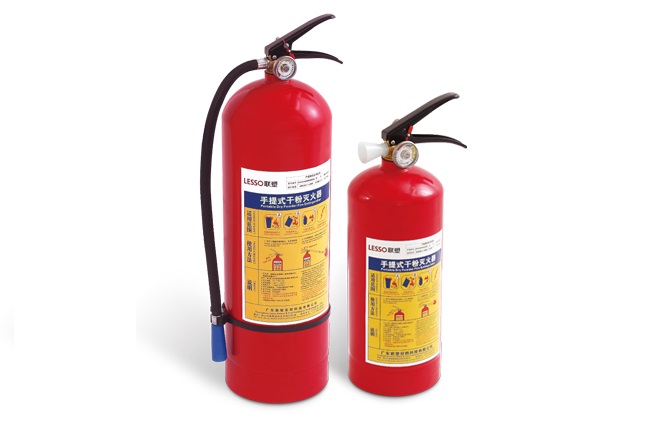During a fire emergency, fire extinguishers are among the most common and convenient tools for fire suppression. Dry powder fire extinguishers, in particular, are widely used due to their broad applicability and rapid firefighting effects. However, in certain specific fire scenarios, dry powder extinguishers may prove ineffective or even pose secondary hazards. Using LESSO dry powder fire extinguishers as an example, this article provides a detailed explanation of the types of fires they are not suitable for, helping users make informed decisions in different fire situations.
1. Electrical Fires
Dry powder extinguishers are generally not recommended for electrical fires, especially those involving live equipment or wiring. While they can quickly suppress flames, the powder may react with energized components, increasing the risk of electric shock.
Hazards:
Powder residue can corrode electronics, causing secondary damage.
Live electrical currents may lead to electrocution during application.
Alternative: Use CO₂ or clean agent (dry chemical) extinguishers for electrical fires.
2. Metal Fires
Fires involving reactive metals (e.g., magnesium, sodium, potassium) are high-risk for dry powder extinguishers.
Hazards:
Metals react violently with moisture or certain chemicals in dry powder, potentially causing explosions.
Standard dry powder (e.g., sodium bicarbonate) may fail to smother the fire.
Alternative: Use Class D extinguishers (e.g., dry sand or specialized metal-fire powders).
3. Deep-Seated Oil Fires
For fires in oil tanks, boilers, or deep fryers, dry powder’s effectiveness is limited.
Limitations:
Powder may scatter due to high flames, reducing suppression.
Fails to fully seal the fuel surface, risking re-ignition.
Alternative: Foam or wet chemical extinguishers are ideal for cutting off oxygen supply.
4. Chemical Fires
Fires involving flammable/explosive chemicals (e.g., organic solvents, oxidizers) require caution.
Hazards:
Dry powder may react violently with oxidizers (e.g., chlorates, peroxides), worsening the fire.
Toxic gases could form from chemical interactions.
Alternative: Use CO₂, foam, or specialized chemical extinguishers.

5. Liquefied Gas Fires
For propane or LNG fires, dry powder is not the best choice.
Risks:
Cannot stop gas leaks; flames may spread with escaping gas.
Light gas density allows fires to reignite easily.
Solution: Shut off the gas source first, then use CO₂ or Class B extinguishers.
Always match the extinguisher to the fire type to ensure safety and effectiveness. For specialized environments (e.g., labs, industrial sites), prioritize targeted extinguishing agents and regular fire safety training.













